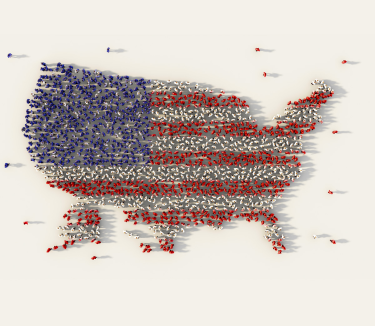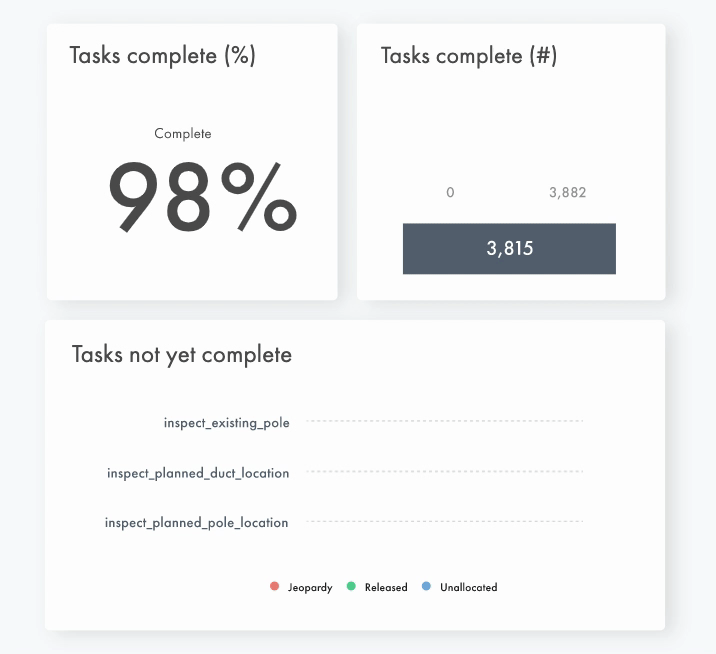
Broadband grants and funding opportunities
The US government has released over $135B in broadband infrastructure funding and grants since the pandemic escalated the need for universal connectivity.
If you’re building a broadband network, find out how Render can maximize your funding allocation and ensure faster delivery.
Planning for funding application and network delivery success
All broadband grants and funding programs have one goal in mind; to deliver digital equality to all US communities. To honor this, most public funds will have location-based requirements, strict delivery milestones, and considerable reporting obligations to remain compliant.
Network operators pursuing funding should be 100% prepared before the application window opens on how to address these and be confident you have the right partnership and delivery approaches in place.
Here we provide a summary of the infrastructure-focused funding opportunities for rural areas, municipalities, and all telecommunications networks.
Broadband Grants and Funding Opportunities in the U.S.


Infrastructure and Jobs Act, BEAD program
Who: Funding is to be directed to unserved and underserved communities across the U.S.
Fund allocations and highlights:
+ $42.5B for the Broadband Equity, Access, and Deployment (BEAD) program administered by the National Telecommunications and Information Administration (NTIA). NTIA will distribute the funding to states, which in turn will distribute grants to operators and service providers to build in unserved areas.
+ $2.75B for digital equity grants to states.
+ $2B for broadband grants and loans. distributed by the Department of Agriculture's Rural Utilities Service.
+ $2B for Tribal Broadband Connectivity Program grants.
+ $1B for middle-mile network grants.
+ $600M in Private Activity Bonds for broadband projects.

Tribal Broadband Connectivity Program
Who: Funding to be directed to Tribal governments and bodies to be used for broadband infrastructure on tribal lands.
Grants will be directed to tribal governments to be used for broadband infrastructure deployment on tribal lands; affordable broadband programs including free or reduced-cost broadband service and preventing disconnection of existing service; and telehealth, distance learning, digital inclusion, and broadband adoption activities.

Rural Digital Opportunity Fund (RDOF)
Who: 5.4m census blocks locations.
Ph 1: entirely unserved by voice and broadband, Ph 2: Remaining unserved and partially served census locations.
Funds are dispersed via reverse auction. A two-step application process includes a short and long-form, the latter needed after funds are awarded.
Ensure networks stand the test of time by prioritizing higher speeds and lower latency.

Reconnect
Who: Eligible rural areas
ReConnect furnishes loans and grants to provide funds for the costs of construction, improvement, or acquisition of facilities and equipment needed to deliver high-speed broadband. In Phase 3 this year, USDA is distributing the funding as grants — a departure from the first two rounds of ReConnect.

Capital Projects Fund
Who: States, territories and Tribal governments with critical capital needs.
The Capital Projects Fund allows for investment in high-quality broadband as well as other connectivity infrastructure, devices, and equipment. In addition to supporting broadband, it also provides flexibility for each state, territory, and Tribal government to make other investments in critical community hubs or capital assets that provide access jointly to work, education, and health monitoring.

Funding and delivery readiness is key
When applying for broadband funding or grant programs, building technology-enabled efficiencies into your application provide a competitive advantage.
Render’s proven network construction platform delivers significant value to broadband providers at all stages of the funding and delivery process.

Streamline compliant reporting with Render Insights
Customized data capture including the customer type, latitude and longitude, priority locations, and distance from network facilities significantly streamline public reporting and compliance requirements. Attempting to achieve this with paper construction prints, Microsoft Project or multiple Excel sheets will introduce significant risk.

Planning & scoping accuracy
Prepare your project plan and budget with confidence to enable a competitive application while maintaining build flexibility and a sufficient margin.

Real-time, geospatial project visibility
Seamless real-time tracking of progress against priority service areas enables early identification of at-risk delivery.

Templated, public system compliant reporting
Customized data capture including the customer type, latitude and longitude, priority locations, and distance from network facilities significantly streamline public reporting and compliance requirements. Attempting to achieve this with paper construction prints, Microsoft Project or multiple Excel sheets will introduce significant risk.
Confidence to meet delivery milestones
Render’s platform captures critical geospatial As-built and post-award data in real-time, providing significant cost and deployment efficiencies and reducing timelines by up to 50%. An accelerated network delivery will provide an opportunity to meet compressed delivery timelines and achieve ‘break-even’ faster.
‘With Render, productivity is off the charts, data integrity is high, and construction costs are down, all without ever touching a piece of paper. Now I can’t imagine trying to implement a large-scale utilities construction project without it’
Jeremiah Sloan | COO | Craighead Electric Cooperative (CECC)
With project milestones and location-based build prioritization becoming a key consideration for CAF II and RDOF funding, CECC recognized that a flexible, geospatial construction approach was critical to delivering against these. In three years the 30,000 member cooperative connected over 10,000 locations - 5,000 more than planned - 20 months ahead of time and 20% under budget.



